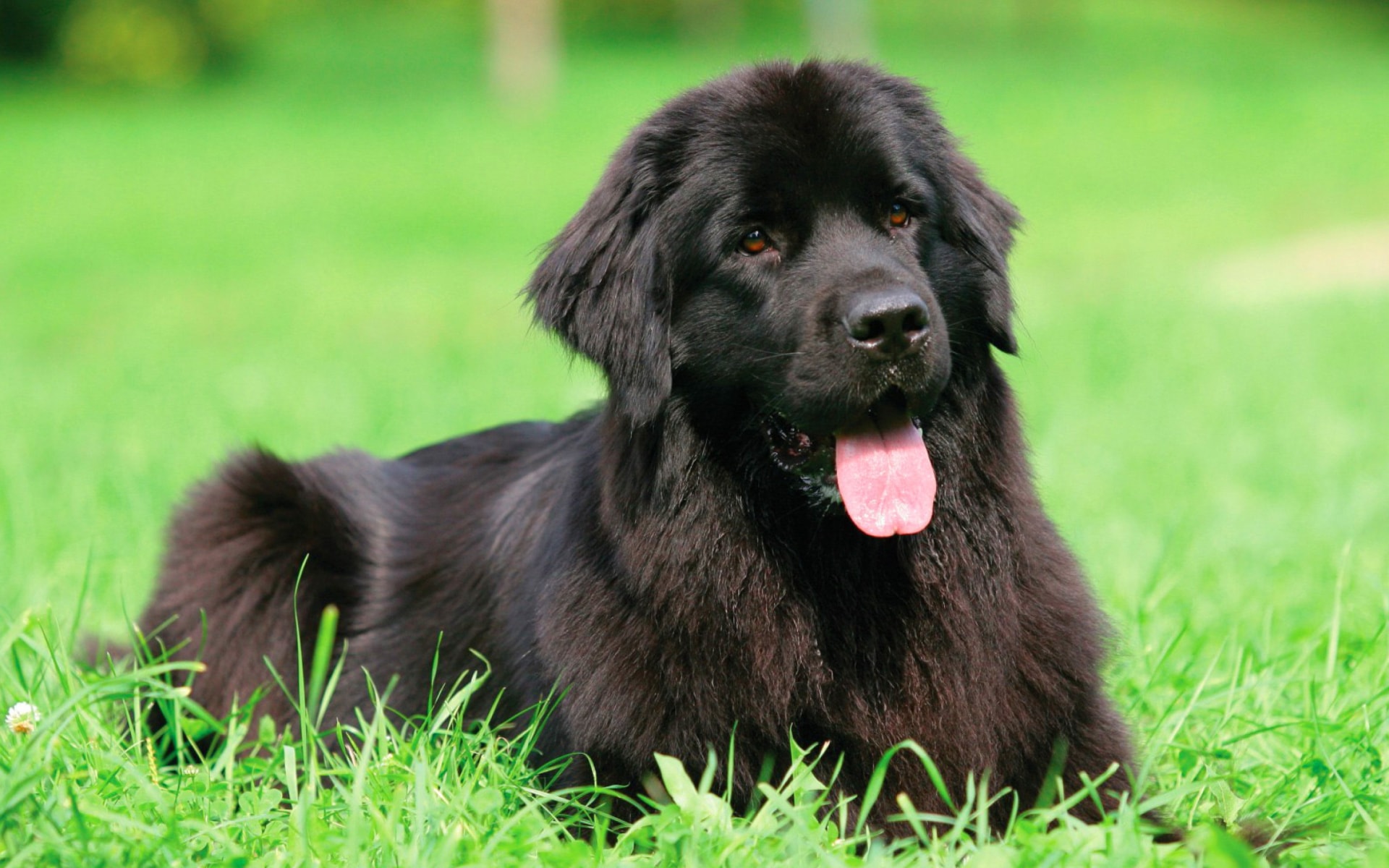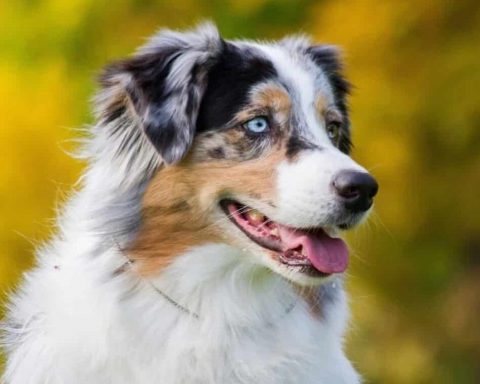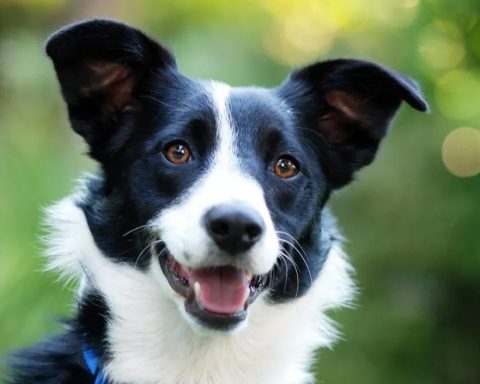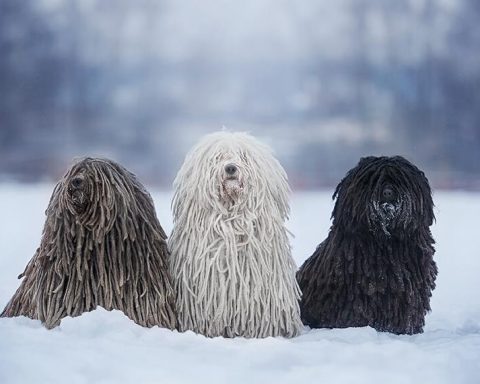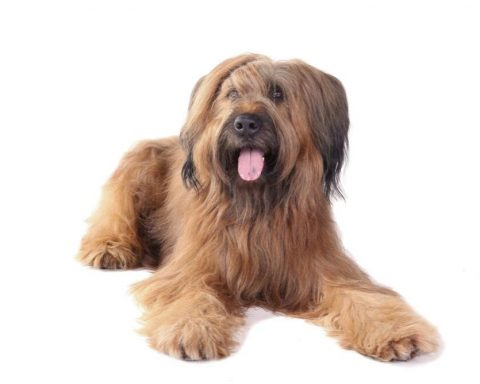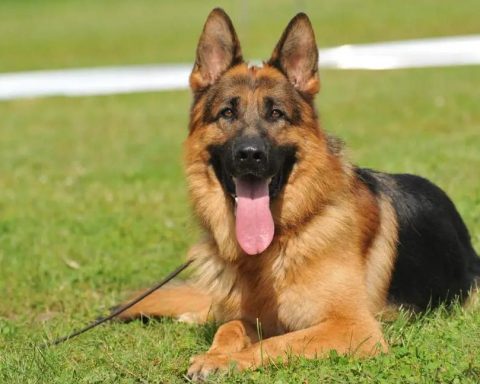The Newfoundland is a dog with a sweet temperament, i.e. not clumsy or bad-tempered. He is a affectionate companion.
The Newfoundland is a multi-purpose dog, in the home, on land or in the water, he is designed to have the ability to work and has a natural ability to save lives.
The Newfoundland has an exaggerated, heavy coat that is very harmonious, with a deep body, heavy bones, and a muscular and very strong build. A good Newfoundland will hold his head nobly and proudly.
Place of origin
Canada
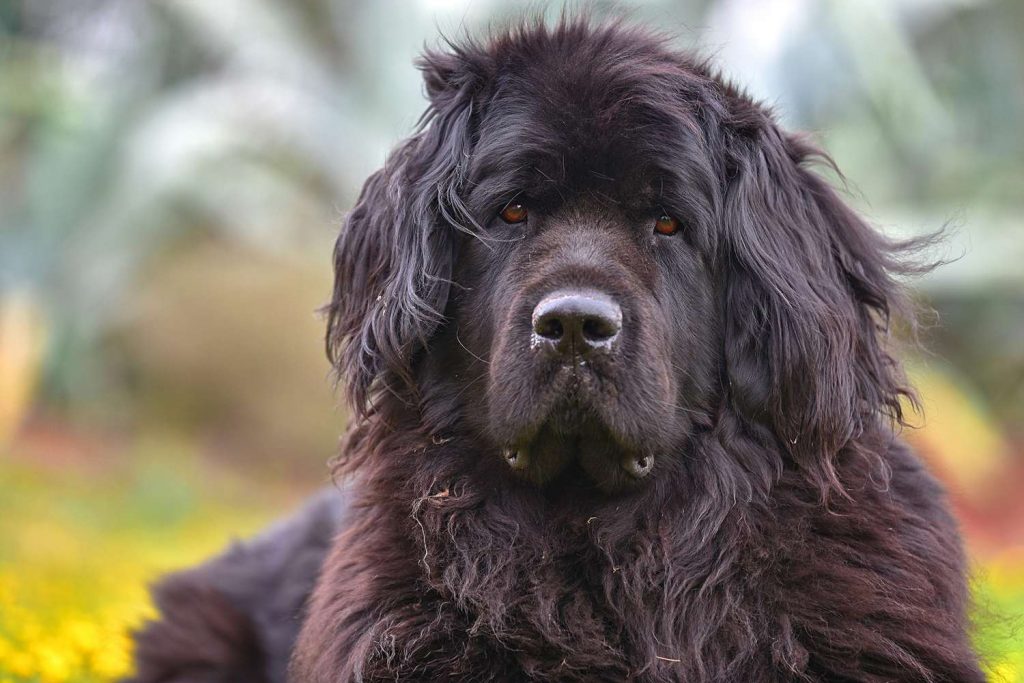
Body Type
Adult males average 28 inches tall at the shoulder; adult females average 26 inches tall at the shoulder. Adult males weigh about 130 to 150 pounds; adult females weigh about 100 to 120 pounds.
Males appear stouter in appearance than females. Larger size is better, but not at the expense of balance, structure and proper gait. The length of the Newfoundland (from shoulder to hip) is slightly greater than the height (horse’s rump to the ground).
The Newfoundland possesses a fair amount of body mass, well expanded ribs, solid muscle and heavy bone.
Head
The head is stout with a broad head. Head: Slightly arched with very well developed occipital bone at the rear. Cheeks well defined.
Eyes: Dark brown (points will be deducted for light brown or gray eyes depending on how much they affect the expression), relatively small, deeply placed, fairly far apart, eyelids close to the eyeballs, no inverted rolls.
Ears: Relatively small, triangular, slightly rounded at the tips, situated on the plane of the head or slightly above and eyebrow, tucked into the head. Bringing the ears forward, they can extend to the outer corners of the eyes on the same side. Expression: soft and reflective of the characteristics unique to this breed: benevolent, intelligent and noble. The forehead and face are smooth and free of wrinkles. The stop is moderately sloping, but the well-developed brow bone makes it look abrupt in profile.
Muzzle: Neatly terminated, wide and deep throughout. Depth and length are approximately equal. The length from the nasal mirror to the stop is slightly less than from the stop to the posterior occipital bone. The upper part of the muzzle is rounded and the profile of the nose is straight and slightly arched.
Bite: A scissor bite or pincer bite. Mandibular incisors that are otherwise normal bite and harmony do not indicate a malocclusion and are minor defects.
Neck, Dorsal Line, Body
NECK: Strong, in front of the shoulders, and long enough to allow the head to be held proudly.
Back: firm, wide, muscular and level from the back of the horse’s shoulder to the hips. The chest is full and deep, with the depth of the underparts extending to the elbows. The ribs are well expanded, with a slight contraction of the front third of the ribs that does not impede the movement of the elbows. The loin sockets are deep. Hips wide and slightly sloping.
TAIL: The tail is in the natural line of extension of the rump. Tail root broad and strong. The tail is not twisted and the terminal tailbone extends to the fly joint. When the dog stands easily, the tail hangs straight down, allowing a slight curl at the end. When the dog is in motion or excited, the tail is raised but not allowed to curl behind the back.
Forequarters
The shoulders are muscular and sloping back, with the elbows just below the highest point of the horse’s rump. The forelegs are well muscled, well boned, straight and parallel to each other, with the elbows pointing straight back. The distance from the elbow to the ground is equal to half the height of the shoulder. The feet are strong and slightly inclined. Foot claws of proportionate size to the whole, webbed, cat-footed. Wolf claws excised.
Hindquarters.
The hindquarters are very powerful, muscular and very well boned. Viewed from behind, the hind legs are straight and parallel to each other. When viewed from the side, the thighs are wide and fairly long. The knee and fly joints are properly angled, and the area below the fly joints is perpendicular to the ground. The fly joints are as low as possible, the hind foot claws are similar to the foreleg claws, and the wolf claws need to be removed.
Coat
Adult Newfoundlands have a smooth, water-resistant, two-layer coat that falls in any position with reverse combing. The outer cloak is coarse, stiff, medium-length, plump, and straight or wavy-haired. The undercoat is soft and dense, although it decreases during the summer or hot season. The hairs on the face and muzzle are short and fine. The backs of the legs have feathery trimmed hairs. The hair on the tail is long and dense. Excess hair can be trimmed off to keep it neat, but whiskers cannot be trimmed.
Color
Color is secondary to structure and solidity. Permitted colors for Newfoundlands are: black, brown, gray and black and white.
A single color: black, brown, or grey, should appear to be a solid or solid color with white in the following areas (some or all): chin, chest, toes, and tip of the tail. The presence of white in all of these locations is typical and is not considered a defect. In addition, black and gray coats appearing light bronze or brown and gray appearing with light trim are typical.
Rancier Color: White base color with black stripes. Typically the head is solid black, or black with a white muzzle (with or without white ribbing). There are separate black saddle patches, black rump and black extends to the white tail.
Mottling: occurs in a single color or lancel and may deviate from the description above, this condition is considered a defect and requires points to be deducted based on the degree of deviation. Pure white or white with very few stray colors is permitted. However, mottling and color should be compared only if all other qualities are exactly the same, but beautiful mottling should never be sacrificed to type, structure, solidity, and other important factors. OUT OF GRADE: A color or combination of colors other than those expressly described above.
Gait.
The Newfoundland moves with good reach and strong drive. It gives the impression of effortlessness. His gait is smooth and rhythmic. Adapts to the most different types of terrain and uses the fewest number of steps. Front and hind limbs straight ahead. Footprints tend to follow the same trajectory as speed increases. A slight swaying of the skin during movement is characteristic of this breed. Correct front and hindquarters structure and angles are required to produce a correct gait.
Temperament
Sweetness and loveliness characterize the Newfoundland and are the only very important character traits of this breed.
Disorder
A color or combination of colors other than those clearly described above.
Standard Adoption Date: May 8, 1990
Date of implementation of the standard: June 28, 1990
